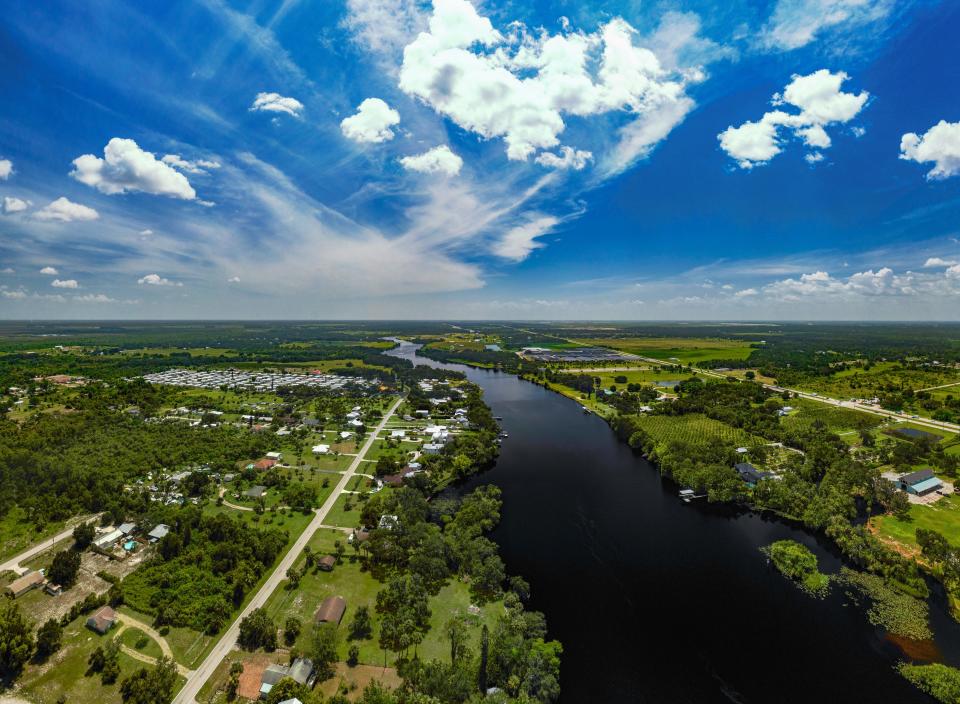Time to turn attention to nutrient runoff from watershed
Whenever water is being released from Lake Okeechobee into the northern estuaries of the St. Lucie and the Caloosahatchee, people become concerned about the impact it is having to our water quality.
This concern is borne from the experience of past releases, and memories of coffee-brown water flooding down the river and out into the turquoise waters of the Gulf of Mexico.

It also brings worries of larger ramifications, of the potential for harmful, toxic algal blooms causing devastation to our local environments and our economies. We know that large, harmful releases from the lake have the potential to transmit blue-green algae blooms into our estuaries. A landmark study conducted in partnership with the SCCF Marine Lab showed that the releases also exacerbate red tides in our marine environment.

It’s important to understand that while the lake has a huge impact on our estuaries, fixing the lake will not be a silver bullet for our water pollution problems. When we can reliably and continuously send clean water south to the Everglades, our estuaries will not be treated as the dumping ground for polluted lake water and will be in a much better position.
At the same time, we need to look at what’s happening in our own backyard. Recent research by North Carolina State University, the University of Florida, and SCCF’s Marine Lab, confirms what we had long suspected — the majority of the nutrient pollution in the Caloosahatchee comes from the watershed itself.
To be sure, large damaging releases have a detrimental impact on our estuaries. Even without the pollution in the water, the huge freshwater releases turn our brackish estuaries fresh, stressing the organisms that live there. However, this new publication demonstrates how the watershed is responsible for more nutrient inputs overall than the lake releases.
We aren’t always receiving large releases from the lake, but the Caloosahatchee remains impaired for nutrients. There are many sources of nutrient pollution — nitrogen and phosphorous — within our watershed.
Stormwater runoff, golf courses, reuse water, septic systems, agriculture run-off, home fertilizer, and even car washes can contribute to excess nutrients running into our watershed. With new peer-reviewed science showing the true impact of these sources, hopefully we can refocus our efforts on nutrient reductions within our watershed.
It is going to take a large effort to clean the Caloosahatchee. When the water budget was last calculated it showed that in order to manage our pollutant load we would need to build the capacity to store and treat 400,000 acre-feet of water.
The good news is that there is currently a project underway that will take a large chunk out of that number. The C-43 reservoir is a massive storage and treatment component of Central Everglades Restoration Project that will hopefully come online in 2025. When it is complete it will store about 170,000 acre-feet of water.
While this is a massive amount of water, it is still less than half of the amount of storage needed. Furthermore, it will be difficult to find enough land to build another reservoir of a similar size. Instead, communities must begin to think of creative solutions to tackle this issue.
However, the best thing we can do to clean the water in our own watershed is source control. This means converting from septic to sewer, creating Best Management Practices that remove agriculture pollution from our waterways, and helping people to understand the importance of selective fertilizer usage on their own properties or eliminating the need for fertilizer by planting natives.
While it is daunting to face the scale of the nutrient pollution issues facing the Caloosahatchee, it is also empowering to know that the solutions to many of our water quality issues can come from our own backyard.
Matt DePaolis is Environmental Policy director for the Sanibel-Captiva Conservation Foundation (SCCF). The foundation's mission is to protect and care for Southwest Florida’s coastal ecosystems.
This article originally appeared on Fort Myers News-Press: Time to turn attention to nutrient runoff from watershed
